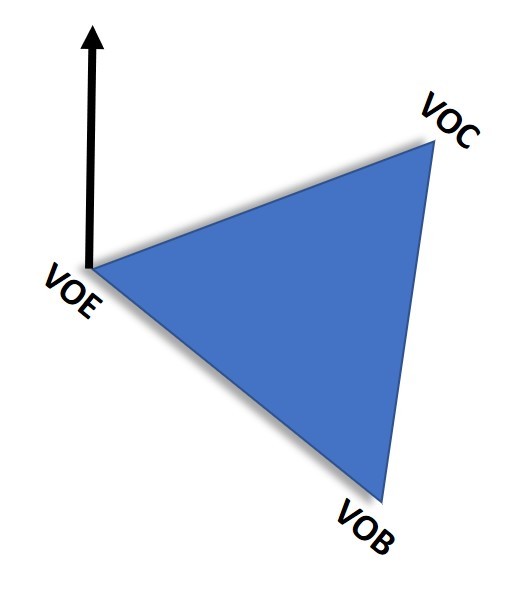Last week I published an article on using Lean Six Sigma in Sales and Marketing and why they think they are different. This article, which was published in Quality Progress magazine (June 2017), goes into greater depth and provides some case studies and recommended actions.
The New Quality Frontier: Applying Continuous Improvement Tools to Marketing and Sales
By John Goodman, Vice Chairman, Customer Care Measurement & Consulting and Ken Feldman, PhD, Principal Consultant, Optec Consulting LLC
The phrase, “We’re different!”, is one that Quality Deployment Leaders often hear from all parts of the organization. This phrase is most prevalent in the Marketing and Sales (M&S) units of most companies.
The quality profession seems to have accepted this argument in that there has only been one article in Quality Progress in the past ten years that addressed quality in M&S. In 2007, Michael Pestorius suggested that quality (Six Sigma and Continuous Improvement tools , hereafter quality tools) had not been applied to M&S for several reasons.[1] These included sales transactions being off-premise, quality managers lacked credibility with M&S and fear that systematizing transactions would quash the entrepreneurial spirit. He then suggested Six Sigma would be very appropriate for both training sales reps and managing the sales process. In fact, quality can go beyond improving those processes to impacting even the contact of M&S operation.
Customer Care Measurement & Consulting (CCMC)’s research in both consumer and B2B environments finds that as much as a third of all customer dissatisfaction stems from incorrect customer expectations that could have or should have been properly set by M&S. Incorrect expectations include overblown promises, confusing promotions and avoidable errors in product use which could have been foreseen. Several of CCMC’s B2B customer surveys in markets ranging from distribution and business services to medical devices and chemicals, have found that problems related to betrayed expectations tend to do more damage than other problems because customers think they are intentional omissions. Finally, for the same reason, customers often do not complain about the problem. Therefore, the problems doing the most damage to loyalty are exactly the ones you hear about least. Because of this, M&S should be a key target area for quality tools.
There is a legitimate question as to whether it is appropriate to lump Marketing and Sales together. Can quality tools be better applied in one discipline versus the other? Marketing has been a bit more receptive because of the extensive use of data and data analysis whether it be in market research, surveys, consumer insights, etc. They are data rich but we do have the problem of “creative” which we have case studies in where we shot that one down to the tune of millions. Further, setting proper expectations does include warning customers of limitations and, as one Chief Marketing Officer of a major financial service firm said to me, “It is not in the DNA of marketing guys to talk about problems or limitations.” Therefore, for the moment we will, fairly or unfairly, paint both functions with the same brush.
The Problem
M&S view their role as selling products, not setting or limiting expectations. As the CMO cited above mentioned, setting proper customer expectations is a usual part of the marketing job. Also, many M&S executives assert, with some validity, that their activities are different than manufacturing operations where quality tools and techniques are most often applied. Sales definitely wants to sell products to the customer whether it is the consumer or to a channel retailer. Marketing does have an interest in better understanding the consumer so they better meet certain underlying and often undiscovered and unfilled needs. Yes, it is eventually for the purpose of selling product but at least Marketing is smart enough to realize that in the long term, if they don’t meet consumer needs, sales will not be there.
The six most prevalent reasons given for why quality practices should not be applied are listed below:
o It’s not always clear who the customer is.
In business to consumer (B2C) marketing environments, the consumer is the end user but the manufacturer often sells through retailers and other channels. For instance, Coke sells to marketing channels such as supermarkets, big box stores, convenience stores and drug stores, not individual consumers. Even in a B2B environment, besides the channel issue, there are multiple customers within the client company. For instance, a copier company has procurement executives, office managers and machine operators who all have different needs. In the Coke world, they have the buying executives, national buyers, regional buyers and even have to deal with individual store managers.
o Sales and marketing is about relationships not process
M&S executives view the sales call as the critical value add that fosters a relationship. However, the most successful sales reps are those who recognize that success is more than showing up and handing out promotional items. Further, many marketing professionals say that creativity is the key to success. However, the best reps develop a repeatable process that overcomes the inefficiencies of treating each sales call or marketing project as a standalone event.
o Many external influences affect sales – it’s hard to measure impact
M&S failures are often blamed on external factors – – the economy, new competitive products, bad press or the most standard rationale, “we lost on price.” These reasons are invalid because a good marketing and sales process will take into account all these factors. In addition, if your product provides a greater value, your company can win the sale even if your price is a little higher. Loss on price means that you did not effectively communicate your greater value for price paid.
In many cases products might be seen as a commodity so while that isn’t exactly true, we do have to show what value we bring to the table especially when The Coca Cola Company or Pepsi decide to go after share by dropping prices for comparable products. Several years ago, The Coca Cola Company decided it wanted to expand its share of the Orange Drink market with Fanta. They dramatically lowered prices compared to Dr Pepper Snapple’s competitive products. Dr Pepper Snapple had to convince the customer (retailer) that they would make more money by providing them strategic and operational guidance on how our products will fill the baskets and they will make more money. In a multi-tiered market it is necessary to convey value instead of just price at multiple levels.
o Data is not always available and Voice of the Customer (VOC) can be expensive
Gathering data on each step of a process such as sales can be difficult and expensive. Sales reps are notorious for hating to fill out forms and customers are reticent to give feedback on someone they depend upon for support. While there is an abundance of sales data available from such sources as Nielsen it is sometimes suspect and not granular enough to provide sufficient insight as to what to do. Despite the data, most organizations aren’t very adept at understanding or analyzing to cull out whatever information might be in there.
o Our industry is highly regulated
In many industries, sales and marketing promotional approaches are regulated to prevent conflicts of interest. However, even in the most regulated industries such as pharma and insurance, Lean Six Sigma (LSS) and quality processes have had significant impact. The conservative approach is often a smokescreen for resistance to change and measurement.
o Lean Six Sigma is only for manufacturing
hile LSS and Continuous Improvement tools were first applied in manufacturing where tangible inputs and outputs are more easily measurable, M&S have inputs and outputs as well. There are many applicable tools such as Value Stream Mapping, Cause and Effect and Brainstorming that apply as well to M&S.
Poor M&S quality can create a huge hit to both the top line and bottom line. In manufacturing, quality usually is justified via cost savings in the production process. While this applies in M&S processes as well, the payoffs in top line revenue and word of mouth impacts can be significantly greater. This is because unpleasant customer surprises due to M&S setting wrong expectations cause much greater damage to loyalty and foster negative word of mouth as well as extra cost. The top line and bottom line impacts can be quantified in a number of ways:
o M&S issues cause up to four times the damage of other quality issues
CCMC’s research on the impact of problems on loyalty usually consists of a survey of several thousand business customers of the client. Customers are presented with a list of possible problems and asked if they have encountered them and if several were encountered, which was most serious. The data is then analyzed to isolate which problems do the most damage to loyalty and willingness to recommend. We have consistently found that M&S problems, such as “the sales rep misled me” or “I was confused by your marketing literature”, can cause as much as four times as much damage to loyalty as an operational issue such as a shipping error or delay.
o Misleadingly low complaint rates
There is an assumption that if complaints are low, customers are satisfied. CCMC’s research across a score of industries suggests that a majority of customers (and in consumer packaged goods as many as 90 percent) will not complain about most problems because it is too much hassle, it is not important enough or, in B2B environments, may create ill will with the sales rep or other company staff members.
o Heightened regulatory risk
Misleading customers can often lead to regulatory interventions which, in turn, can spark loss of sales as well as significant expenses. For instance, VW had a decline in sales in November, 2015 of 25 percent vs. 2.5 percent for the industry as a whole. Likewise, a medical device manufacturer which received an FDA warning letter, based partially on complaints, ended up spending almost $100 million in compliance costs.
o Unnecessary costs
The following are three examples of unnecessary costs created by defective M&S processes: providing extra service where it is not needed or wanted, extra spending in design and production of promotional materials and confusing customers with complex promotions.
CCMC found in the B2B cigar manufacturing market that many small and medium retailers are happy to place most orders via the internet and only desire a single annual visit from the sales rep while other retailers only order from reps that make a personal visit. Asking customers their preference for visits can free up significant sales resources.
Likewise, at Dr Pepper Snapple, creation of a routine approach to design and production of promotional materials led to a savings of over 50 percent of expenditures in this expense category. Furthermore, millions of dollars of unused Point of Sale materials were being disposed of yearly due to poor communication and execution between Sales and Marketing. Finally, at a different beverage company, CCMC found that 70 percent of consumer calls to the 800 number involved confusion about overly complicated marketing promotions.
The Solution
In many companies, when Sales closes the deal and wins the customer, the M&S team moves on to the next campaign. If the revenue loss, service costs and negative word of mouth that results from incorrectly set expectations can be identified and quantified, the company will then have an economic imperative to enhance M&S operations. Therefore, quality should take the lead in understanding the role of M&S in expectation setting, use the Voice of the Customer to identify and quantify specific numbers of customer affected and estimate the revenue and word of mouth impact of these issues.
Use the customer journey as the context to link M&S to ultimate loyalty and Word of Mouth (WOM)
Create a customer journey map via a meeting of reps from all parts of the company. Start off with identification of customer needs and product specs and then go through design, production channels, delivery purchase and use. Ask what problems or unpleasant surprises customers encounter. Have IT participate because they will be aware of operating systems which can report problems and transaction failures in advance, e.g. delays which will impact delivery to the retailer or end-user customer. Figure 1 provides an excerpt of such a map based on an analysis done by the ASQ Voice of the Customer Committee.
Add customer error and incorrect expectations to the scheme of causes of dissatisfaction using broad VOC and quantify the number of customers affected.
Most VOCs consist of surveys and complaints. Other valuable data sources include:
o Operational data – data on missed shipment and delivery dates will indicate that customers had an unpleasant surprise even if they did not complain. Unpaid invoices often indicate dissatisfaction. In many cases, Finance does not care why the invoice was not paid – but the Quality/LSS analyst can create a win-win-win by researching it- enhance cash flow, reduce collection costs and fix whatever quality issue first evoked the customer’s withholding of payment. A fourth payoff often rectifying a problem raised by the customer is something that impacts the end-user consumer, thereby damaging value to the ultimate customer.
o Employee input – front line employees are often acutely aware of customer frustrations before they ever surface as formal complaints or survey results
o Social media – consumers often provide negative online reviews and tweets even before they return the product or complain
o Sales reps –have a strong incentive to not report problems because they must spend their valuable time cleaning up messes rather than selling – they must be given easy channels or they simply give the customer a credit and move on with no one at HQ aware of the real problem.
o Channel input – channels must field complaints from end users, again wasting their time
o Website search data – e.g. a food company found that customers were not able to find answers to “where to buy” and promotional issue questions.
Much of this data already exists if someone would just collate and analyze it.
·Quantify the bottom line damage of M&S based quality issues. These include excess costs as well as revenue and word of mouth damage of quality problem.
o M&S processes are often inefficient and non-systematic. Pestorius, in his 2007 article, suggested that if the effectiveness of the five key marketing and sales steps (prospecting, building rapport, identifying needs, making the offer and overcoming objections) could be moved from 90 percent efficient to 95 percent efficient, the company would generate 18 percent more overall sales with the same resources.
o Define setting proper customer expectations as part of quality – if dissatisfaction due to incorrect expectations could be cut in half, customer dissatisfaction could be cut by 10-15 percent from whatever level that currently exists. For guidance on quantifying the impact of dissatisfaction on loyalty, revenue and word of mouth see Goodman’s other articles in Quality Progress[2], [3] , his ASQ Webcast[4] or Customer Experience 3.0[5], published by the American Management Association.
o Where to buy and promotional issues should be included in the quality equation because they often lead customers to abandon their intended purchase.
The original effort to quantify the above factors need not be a sophisticated research project. Interviews with a small sample of customers by the service area in addition to looking at operational data and discussions with a representative group of Sales people should provide rough estimates as well as several example case studies to illustrate the damage of the status quo.
Action Plan
Applying quality processes to M&S must be recognized as a revolutionary culture change. As such, you should gain small, non-threatening victories before attacking sacred cows. Execute a small number of interviews with both veteran and novice sales staff to understand the current process as well as with customer service staff to understand the level and damage caused by incorrect expectations. Remember that incorrectly set customer expectations often surface later in the customer journey as problems articulated to customer service.
The following are seven steps to start improving quality in Marketing and Sales:
1. Prepare a customer journey map with input from your front line staff including operations and service. This should identify key interactions with the customer and opportunities for both customer loss and delight.
2. Get M&S’s attention via a top-line analysis of current processes, costs and revenue opportunities. What’s in it for me is the best way to get someone’s attention. Look at high cost areas and estimate revenue and word of mouth enhancement opportunities. Create a conservative estimate of the overall financial impact of the current customer experience. A good rule of thumb (based on over 1,000 customer studies) is that 50 percent of attrition is due to a poor customer experience.
3. Identify three short-term opportunities. These should include, one each, opportunities for enhanced efficiency, reduced unpleasant surprises and avoidable customer mistakes. Quantify the number of customer affected by each issue.
4. Execute a survey of a random sample of customer to identify the full range of dissatisfaction and the extent that you do not hear about it
5. Experiment with a broader Voice of the Customer process. Identify two customer interaction transaction failures that can be identified in the system and create a way to proactively warn the customer prior to their having to call about it. Measure the payoff in reduced service cost and increased customer satisfaction.
6. Experiment with proactive, preventive with onboarding of customers, ideally using short fun Website education using video
7. Identify and understand the Sales and Marketing processes. Get the waste out and focus on what is important to the Customer/Consumer and then EXECUTE with EXCELLENCE
Sidebar: Mini-Case studies
· Dr Pepper – First, the LSS team found that each marketing campaign was treated as a separate process. Work was undertaken to understand that regardless of the details of the campaign, most of the steps were similar and consistent across the process. Standardizing the process resulted in a more consistent, timely and on budget marketing campaign without detracting from the creative element. Another application of quality tools allowed for significant sales growth in a major product by adding an additional 75,000 points of distribution and filling 30,000 shelf voids. This resulted in over $8 million in additional sales revenue. If it isn’t on the shelf, it can’t be sold. Finally, Failure Mode Effect Analysis and process mapping were leveraged for sales failures to add an additional $8.5 million in incremental margin.
· Leading regional insurance company – a major customer point of pain was the valuables limitation in most homeowners’ policies. The quality and service staff suggested modifying the welcome letter to highlight the limitation. While sales objected, a pilot test was executed. Customers were not turned off – in fact they bought riders for additional insurance (producing additional revenue) and complaints decreased.
· Leading national insurance company – the annuity unit of the company requested assistance from the LSS group on improving the death benefits payout to beneficiaries. The problem was that multiple interactions were needed to pay off the death benefit because the needed forms would not be signed and returned by the beneficiaries. Journey mapping and customer interviews found that many beneficiaries did not want to receive the benefit payout but wanted to keep it invested with the company. This was a much more ideal outcome for the company because it got to retain the invested assets rather than paying them out.
· Construction company – a very successful Northern Virginia construction company markets via word of mouth, customer education at women’s groups and PTA and via great ratings on Angie’s List. They set proper customer expectations for quotes via the website and the receptionist – also have cut cycle time by giving small jobs quote ranges over the phone. Also, set expectations for allowances. Set proper expectations for execution via U shaped curve. Also, allow customer to view project management plan online. Big thing is getting customer to use on line systems.
· Technology company – SalesForce.com identifies where customers’ staff don’t use the technology effectively and intervenes via customer success executives who work with the client to retrain the staff. Clients perceive higher value and are much more likely to renew annual contracts.
John Goodman, MBA is Vice Chairman of Customer Care Measurement & Consulting, jgoodman@customercaremc.com, Twitter jgoodman888. His new book, Customer Experience 3.0 was published in May of 2014. It is now available in Chinese and Japanese. AMACOM also published his first book, Strategic Customer Service which is available in Japanese and Spanish. His free ebook, Selling Service and Quality to the CFO and CMO was published by Salesforce.com at http://bit.ly/1ZnvNGU.
Ken Feldman, PhD is the Principal Consultant at Optec Consulting LLC. He is a noted expert in the field of Lean Six Sigma and a sought after consultant and conference speaker. He may be contacted at drken@optecconsulting.com.
[1] Pestorius, Michael, “Applying Six Sigma to Sales and Marketing”, Quality Progress, Vol 40, No1, January 2007
[2] Goodman, John, “Take the Lead In Customer Experience”, Quality Progress, February 2012
[3] Goodman, John, “Manage Complaints to Enhance Loyalty”, Quality Progress, February 2006
[4] Goodman, john, “Measuring and Quantifying the Customer Experience Webcast, ASQ Website, November 2014
[5] Goodman, John, Customer Experience 3.0, American Management Association, New York, 2014







